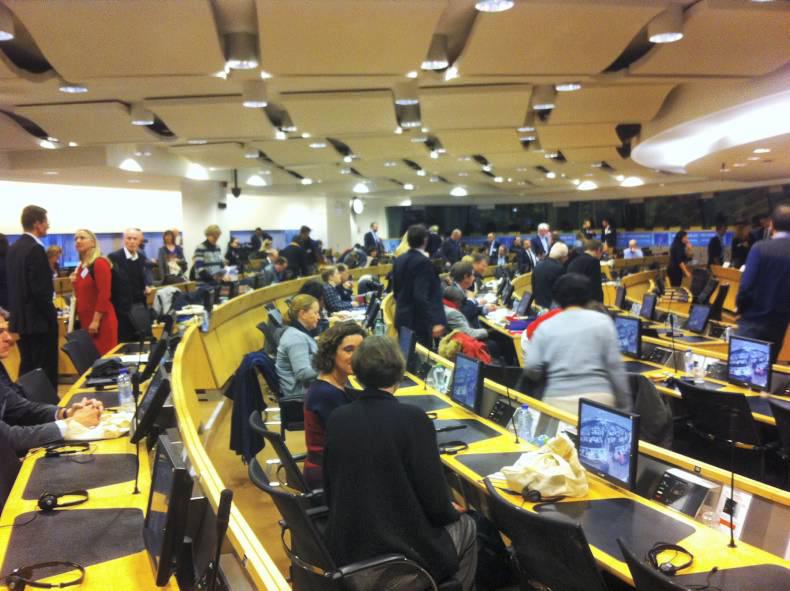Whether we like it or not, the internet is now part of our everyday lives. We socialise on it, read our newspapers on it, and order our food on it – to name but a few uses. Farming is no different and while we can’t grow food in it, the connected world of the internet is becoming a useful tool in the farmyard.
In its broadest sense for us farmers, so-called “smart farming” means gathering data via sensors connected to the internet and analysing it to make more informed decisions on various aspects of our work. This could be, for example, how much feed to offer an underperforming animal. Another example is the MooCall sensor, which attaches to a pregnant cow’s tail and sends a text to your phone when it senses the cow’s tail moving into its horizontal calving position.
Last week, I attended a workshop in Brussels that looked at how different actors along the food production chain could benefit from the internet-of-things. The European Commission is making funding available for research on large-scale data pilot programmes involving the internet-of-things, and farming is one of the sectors being targeted.
The internet-of-things is an umbrella term for scenarios where ordinary objects such as fridges, cars, and even cows are connected to the internet, to allow easier and more efficient management.
Work already taking place
The first thing that struck me at the workshop was the broad range of data-driven smart farming that is already going on around Europe.
A Dutch potato farmer presented his system, which monitors the soil on his farm as well as the produce it gives him. This allowed him to target which sections required more irrigation, fertiliser, etc.
He also incorporated the effect the weather has on production and used this to decide whether or not to harvest some of his crop ahead of schedule.
A big part of his enterprise involved showing his business customers what produce he had for sale. This was also done online and was connected to his own production cycle.
Work with dairy farmers in Spain also featured at the workshop, where one of the top priorities was the ease of use of the smartphone app farmers used.
A representative from John Deere spoke about how the reduction in available human labour was driving them to build more functionality into their machines. All the extra mini-screens in the cab, someone remarked, means we won’t be able to see out the right-hand window of our tractors soon!
Benefits of smart technology
For my part, I spoke about the need for farmers to feel the benefits of smart technology offerings. Often, we’re the last ones considered when a new technology is being developed.
There was also mention of opportunities for technology to help farmers with compliance issues. Could smart monitoring, for example, help farmers show the Department that they are in compliance with the nitrates directive?
And so the discussion continued. The internet is here to stay and it offers farmers much potential to better manage their costs and their produce.
Now, we just need to start talking about broadband coverage in rural areas – perhaps this is something to bring up when politicians start knocking on our doors looking for votes in the coming weeks.
Kieran Sullivan and his brother farm part-time in Co Waterford. You can follow him on Twitter @kieran_sullivan






 This is a subscriber-only article
This is a subscriber-only article











SHARING OPTIONS: